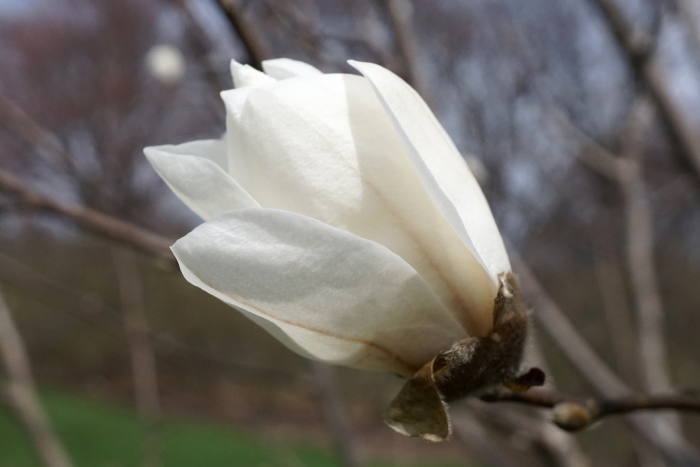Zen Magnolia
(Magnolia zenii)
Zen Magnolia (Magnolia zenii)
/
/

Plant Image Library from Boston, USA
CC BY-SA 2.0
Image By:
Plant Image Library from Boston, USA
Recorded By:
Copyright:
CC BY-SA 2.0
Copyright Notice:
Photo by: Plant Image Library from Boston, USA | License Type: CC BY-SA 2.0 | License URL: https://creativecommons.org/licenses/by-sa/2.0 | Uploader: Ser Amantio di Nicolao | Publisher: Wikimedia Commons | Title: Magnolia_zenii_(Zen_Magnolia)_(34019765225).jpg | Notes: Photo of ''[[Maireana sedifolia]]'' [[San Francisco Botanical Garden]], taken August 2006 by [[User:Stan Shebs]] {{self2-name|GFDL|cc-by-sa-2.5|Stan Shebs}} |


























Estimated Native Range
Summary
Magnolia zenii, commonly known as Zen Magnolia, is a deciduous tree native to the subtropical forests of the Jiangsu province in China. It typically grows to a height of 10-20 feet (3-6.1 meters) and a width of 10-15 feet (3-4.6 meters). The Zen Magnolia has a compact, upright form with a smooth gray bark. It is renowned for its large, fragrant flowers that bloom in early spring before the foliage emerges. The flowers are cup-shaped and come in shades of pink to purple with a white interior, creating a striking contrast against the bare branches.
Zen Magnolia is valued for its early spring blossoms and is often used as a specimen plant in gardens and parks. It is relatively low-maintenance, requiring medium to high amounts of water and thriving in soils with medium drainage. While it prefers part shade, it can tolerate full sun if kept adequately watered. This species is not commonly found in cultivation, but when planted, it offers a unique aesthetic appeal due to its early flowering season. Gardeners should be aware that it may require protection from late frosts, which can damage the flowers.CC BY-SA 4.0
Zen Magnolia is valued for its early spring blossoms and is often used as a specimen plant in gardens and parks. It is relatively low-maintenance, requiring medium to high amounts of water and thriving in soils with medium drainage. While it prefers part shade, it can tolerate full sun if kept adequately watered. This species is not commonly found in cultivation, but when planted, it offers a unique aesthetic appeal due to its early flowering season. Gardeners should be aware that it may require protection from late frosts, which can damage the flowers.CC BY-SA 4.0
Plant Description
- Plant Type: Tree
- Height: 10-20 feet
- Width: 10-15 feet
- Growth Rate: Moderate
- Flower Color: White
- Flowering Season: Spring
- Leaf Retention: Evergreen
Growth Requirements
- Sun: Part Shade
- Water: Medium
- Drainage: Medium
Common Uses
Bee Garden, Bird Garden, Butterfly Garden, Deer Resistant, Fragrant, Showy Flowers
Natural Habitat
Native to the subtropical forests of the Jiangsu province in China
Other Names
Common Names:
Scientific Names: , Magnolia zenii, Magnolia elliptilimba, Yulania zenii,
GBIF Accepted Name: Magnolia zenii W.C.Cheng